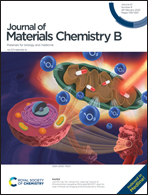Understanding zinc-doped hydroxyapatite structures using first-principles calculations and convolutional neural network algorithm†
Abstract
Element doping is widely used to improve the performance of materials by changing their intrinsic properties. However, the lack of direct crystallographic structures for dopants has restricted the effective high-throughput design or refinement of materials using the doping strategy. Herein, Zn-doped hydroxyapatite (HAP) was selected as the template material. The first-principles optimization and machine learning algorithm were combined to understand the mechanism of HAP doped with Zn2+. Our method could effectively locate the structures in the lowest-energy region. Specifically, our results indicate that the first Zn atom showed a tendency to occupy the Ca(II) site first, and the subsequent Zn atoms entering the Ca(II) sites in a symmetrical manner. The symmetrical entrance of Zn atoms to HAP would minimize the interaction energy between the Zn atoms and the degree of crystal deformation. Finally, we performed uniaxial stretching simulations to evaluate the influence of Zn2+ ions on the mechanical behavior of HAP based on the optimally-doped structure obtained by machine learning (ML). The calculation results were consistent with the experimental conclusion that the doping of Zn2+ ions could improve the fracture toughness of HAP. Our work would provide an effective way to locate possible optimized structures in the doping system and subsequently improve the design of materials.



 Please wait while we load your content...
Please wait while we load your content...